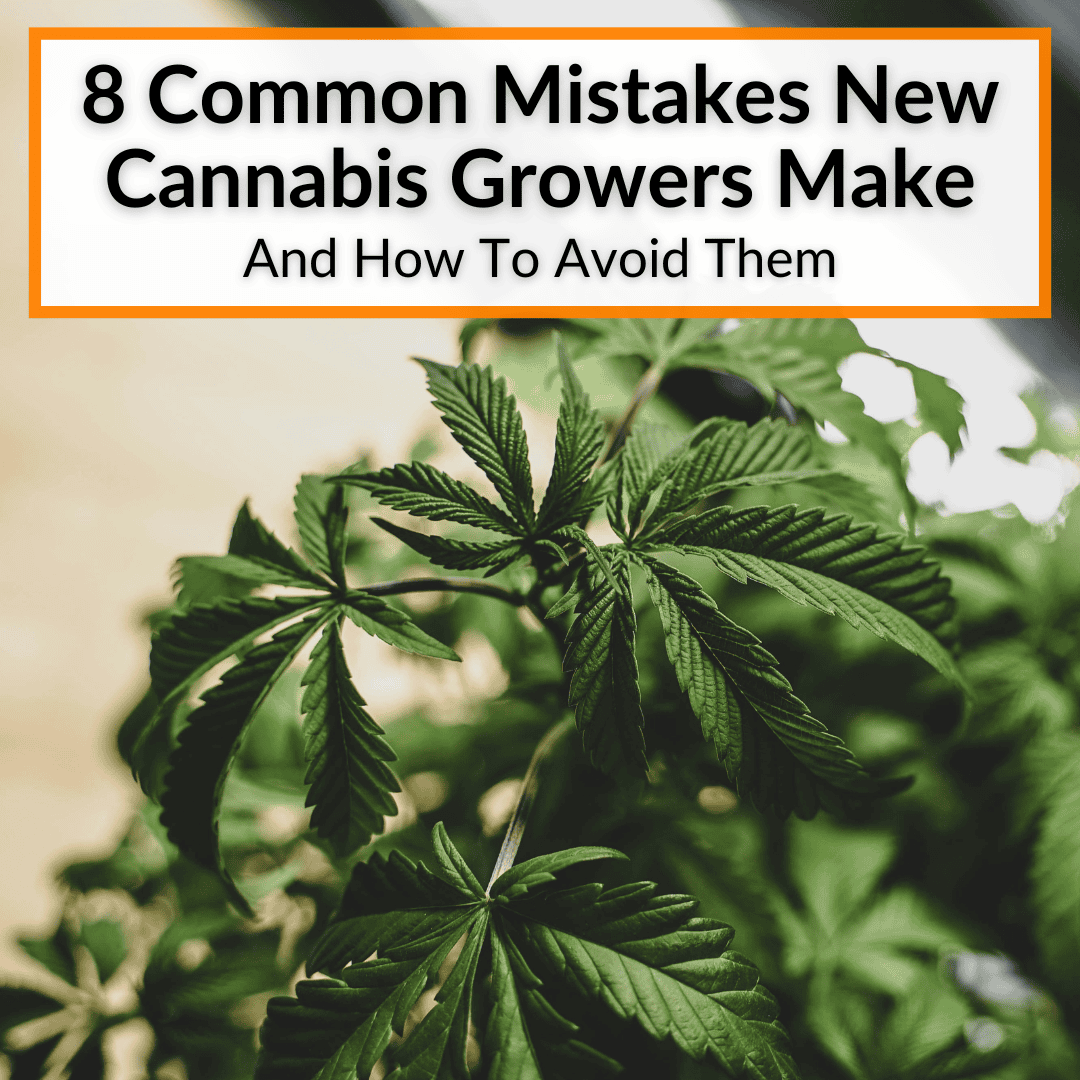 There are a lot of mistakes you can make when growing weed.
There are a lot of mistakes you can make when growing weed.
That’s why I always recommend keeping your first grows as simple as possible.
It cuts down on the potential for mistakes.
With a simple grow the mistakes you might make are also simple. And the same ones every other beginner makes.
Knowing the most common mistakes new cannabis growers make will help you avoid them.
And that puts you at a huge advantage. Your chances of a successful harvest skyrocket. So let’s dive right in and find out which mistakes you need to watch out for and how to avoid them.
Contents
- 1 Common Mistakes New Cannabis Growers Make
- 1.1 Mistake #1: Using Unknown Seeds
- 1.2 Mistake #2: Not Using The Right Soil
- 1.3 Mistake #3: Using Just Any Water
- 1.4 Mistake #4: Over Or Underwatering Your Plants
- 1.5 Mistake #5: Nutrient Toxicity
- 1.6 Mistake #6: Not Providing Adequate Light
- 1.7 Mistake #7: Inadequate Ventilation
- 1.8 Mistake #8: Harvesting Too Early Or Too Late
- 2 Common Newbie Weed Grower Mistakes: Final Thoughts
Common Mistakes New Cannabis Growers Make
All of the following mistakes are very common among beginners, but they are also easy to avoid. If you know to look out for them.
Mistake #1: Using Unknown Seeds
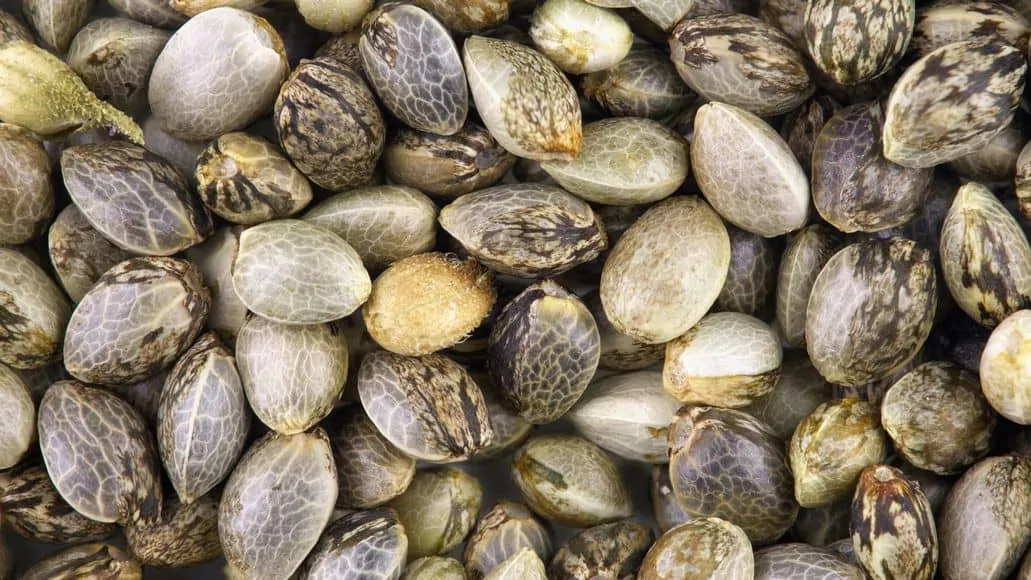
When it comes to cannabis cultivation, predictability is important. You should have a definite spectrum of expectations from your efforts. This is only guaranteed when you use premium, familiar seeds. If you dabble in the unknown, the results can be disastrous.
Unknown seeds can result in unpredictable growth, poor yields, and potentially low-quality plants. Of course, this is not a problem for everyone.
In fact, I used bagseed for my first grow. That said, I ended up with a plant that grew no buds. Many seeds end up being male or hermaphrodites.
That is why I always recommend buying feminized seeds from reputable sources that provide information on strain genetics and growth characteristics. By using high-quality seeds, you can lay the foundation for a successful grow, enhance plant health, and boost overall yield.
It is important to always research and verify seed vendors before buying. To that end, my article comparing the best online seed banks can help you find some good options for high-quality seeds.
If you want specific seed recommendations, I also have an article listing the top 10 cannabis strains to grow for maximum yield.
Mistake #2: Not Using The Right Soil
A common mistake growers make is not choosing the right soil for cannabis cultivation. Using inappropriate soil can lead to poor drainage, nutrient imbalances, and compaction. These, in turn, can stunt plant growth and reduce yields.
Cannabis plants thrive in well-aerated, nutrient-rich soil with good drainage. The soil should also have optimum pH levels. It should also provide a balanced N-P-K ratio to the plant.
To prevent the mistake of not using the right soil, select high-quality, cannabis-specific soil or create your own mix with organic compost, perlite, and vermiculite. My article on getting started with a basic grow has recommendations for good soil, in addition to all the other supplies you will need.
Ensure that the soil’s pH is between 6.0 and 7.0 for optimal nutrient uptake. Regularly test and modify the soil pH as needed, to maintain the ideal growing environment for healthy, productive cannabis plants. The article I linked to in the last paragraph helps with this, too.
Mistake #3: Using Just Any Water
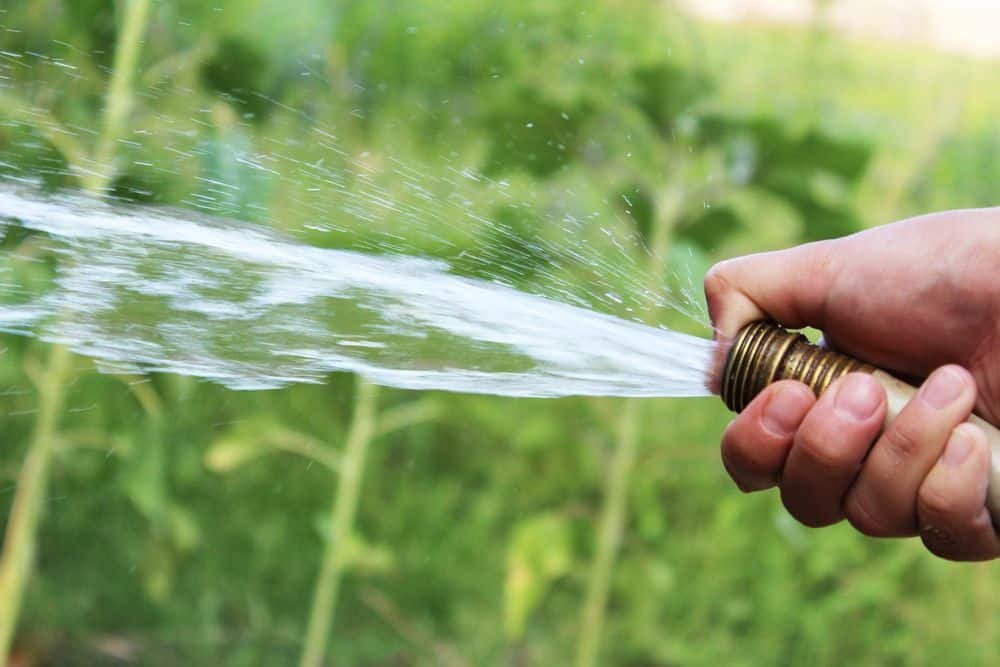
Using poor-quality or untreated water is a critical mistake newbies make in cannabis growing. Tap water often contains excess calcium and magnesium. These minerals are beneficial in proper amounts, but they can also harm plant growth when overly abundant.
Untreated water can also disrupt the NPK ratio (nitrogen, phosphorus, and potassium) and alter soil pH, leading to nutrient imbalances. Poor water quality also hinders nutrient availability and uptake, stunts plant growth, and reduces yields.
To avoid this mistake, always test and treat water before use. Employ reverse osmosis (RO) systems or water filters to remove excess minerals and contaminants.
Additionally, adjust the pH to the ideal range (typically between 6.0 and 7.0 for soil) to ensure optimal nutrient absorption. Regularly monitor the water quality (ppm reading) and soil pH to promote healthy plant growth and maximize yield.
Mistake #4: Over Or Underwatering Your Plants
Mistake number three in cannabis growing is underwatering or overwatering the plants. Overwatering can lead to root rot, yellowing, wilting, slow growth, mold, and drooping or curled leaves.
Conversely, underwatering causes nutrient deficiencies, stunted growth, reduced photosynthesis, wilting, and increased susceptibility to stressors and diseases.
To avoid these issues, learn to recognize signs of over and underwatering. Always check the top inch of the soil for moisture before watering.
Use good quality water (test it with a TDS meter to ensure appropriate ppm levels) and regularly check soil pH. (You can also use trays to catch runoff water after watering to test its pH and ppm.) Adjust your watering schedule accordingly.
Mistake #5: Nutrient Toxicity
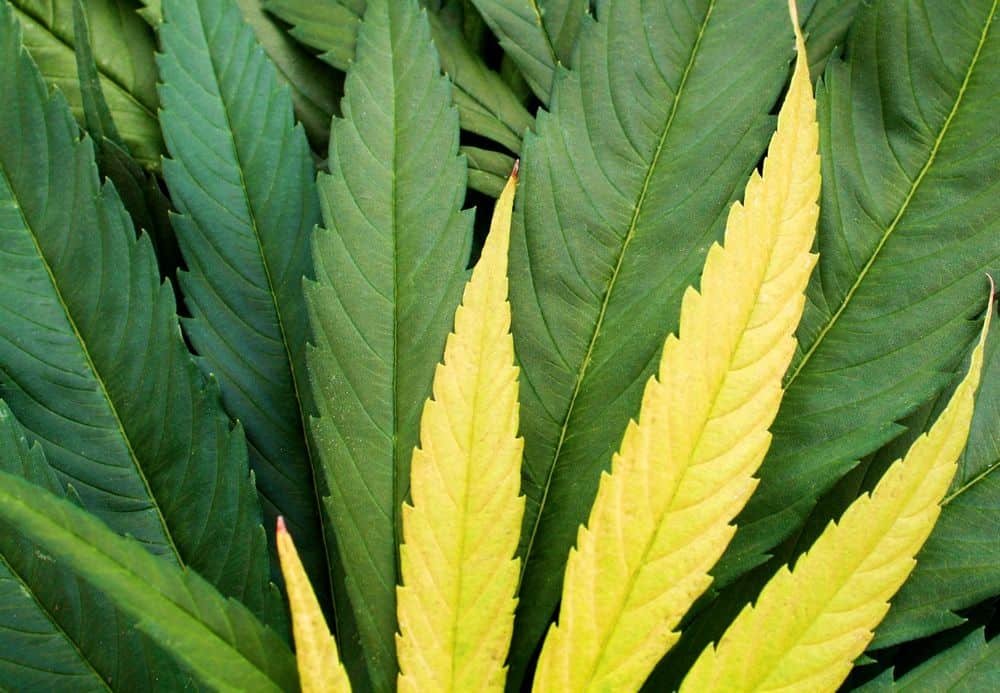
Many novice growers believe that there is no such thing as too many nutrients. They always worry their plants are not getting enough and keep adding fertilizers. However, excessive use of fertilizers (even organic ones), can result in nutrient toxicity.
Nutrient toxicity in cannabis occurs when there is an excessive buildup of nitrogen, phosphorus, and potassium (NPK). This can adversely affect your yield by disrupting water uptake due to nutrient accumulation at the roots. It can result in symptoms like leaf burn, yellowing, and stunted growth.
To avoid this mistake, it is crucial to follow the recommended nutrient dosages and schedules. It is best to start with lower concentrations (50% of the recommendations on the packaging is a good start) and gradually increase them as needed. Regularly monitor the plants for signs of nutrient burn and adjust feedings accordingly.
You can use either organic or synthetic fertilizers for your weed plants and both have their advantages. I always recommend synthetic for beginners, because they are specifically dosed and the packages contain recommendations (though you do want to cut those in half).
I have an entire article on cannabis nutrients. Definitely check it out, if you are unsure about how and what to feed your plants.
Mistake #6: Not Providing Adequate Light
Another common mistake cannabis cultivators make is not providing adequate light to their plants. The right amount of light is vital for the plant’s survival and growth. If they receive too little light, they won’t grow properly, and if they get too much, they won’t flower.
For indoor plants, use LED lights with timers set for 12-18 hours of light, depending on the plants’ growth stage. During the vegetative stage, provide 18 hours of light and 6 hours of darkness. During the flowering stage, switch to 12 hours of light and 12 hours of darkness.
For outdoor plants, choose a sunny spot, ideally south-facing, so that it gets at least 8 hours of sunlight daily.
Mistake #7: Inadequate Ventilation
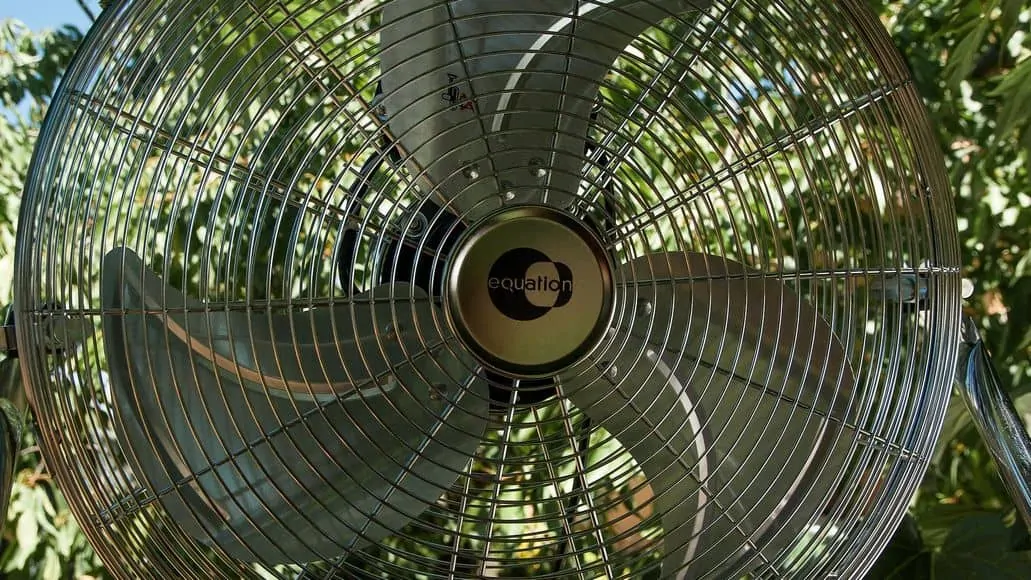
If you grow your cannabis indoors, proper ventilation is a must to prevent diseases and ensure robust growth. Poor ventilation can severely impact your yield and plant health.
Air that is too moist or too warm could give rise to mold and mildew, while cold air can stress the plants. Optimal ventilation is necessary to create an optimal environment, promote healthy, disease-free cannabis plants, and maximize yield.
To avoid ventilation issues, use fans to maintain consistent airflow, gently moving air just above the plant tops. Ensure fresh air enters the grow area from the bottom and provides adequate ventilation. Avoid direct airflow on the plants to prevent damage.
Mistake #8: Harvesting Too Early Or Too Late
A common mistake growers make is harvesting the cannabis either too early or too late. Harvesting at the right time is crucial for optimal potency and flavor.
The ideal time to harvest is when trichomes transition from cloudy white to amber. If the trichomes are clear or still entirely white, it is too early to harvest. This can result in less potent buds.
Conversely, if you wait until the cannabis plant leaves turn yellow and the trichomes are mostly reddish/amber with few or no white ones left, it may be too late.
This can degrade the cannabinoids and terpenes and reduce the overall quality of the buds. To ensure the best results, closely monitor the trichomes and harvest at the perfect stage of maturity.
Common Newbie Weed Grower Mistakes: Final Thoughts
Growing cannabis successfully requires attention to detail and an understanding of common pitfalls. If you avoid making any of the mistakes listed above, you will be well on your way to a successful harvest.
I always recommend keeping things as simple as possible for your first grow. Work on getting the basics right first. After a few successful grows, you can start using advanced techniques to further boost your yields. That all-important “gram of marijuana per watt of light used” benchmark is within reach!
Leave a Reply